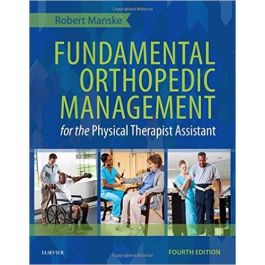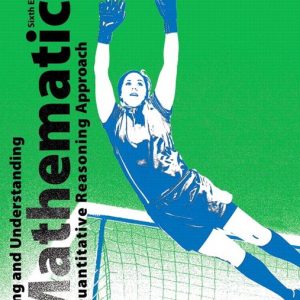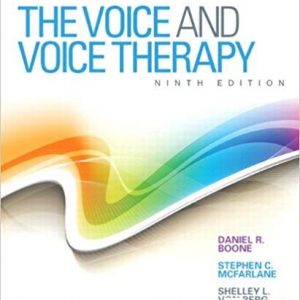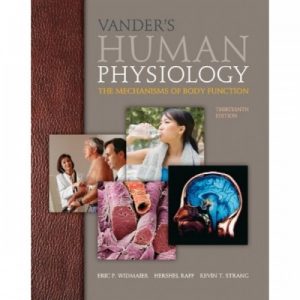This is completed downloadable of Test Bank for Fundamental Orthopedic Management for the Physical Therapist Assistant 4th Edition by Manske

Product Details:
- ISBN-10 : 0323113478
- ISBN-13 : 978-0323113472
- Author:
Master the role and the skills of the physical therapist assistant! Fundamental Orthopedic Management for the Physical Therapist Assistant, 4th Edition helps you apply the principles of orthopedic science to physical therapy interventions. First you will learn how to assess flexibility, strength, endurance, and balance, and then you’ll become a more valuable PTA by learning the essentials of tissue healing, gait and manual therapy, biomechanics and kinesiology, and the management of orthopedic patients by region and condition. This edition includes a new full-color design and illustrations, and broadens its scope with new chapters on topics such as musculoskeletal imaging and women’s issues related to physical rehabilitation. Written by clinician and educator Robert Manske, along with a team of expert contributors, this text is your complete guide to success in physical therapist assisting!
Table of Contents
- Part I Basic Concepts of Orthopedic Management
- Introduction
- Chapter 1 Patient Supervision and Observation During Treatment
- Supervising the Patient during Treatment
- Modifications during Treatment
- Understanding Different Philosophies of Physical Therapists
- Glossary
- References
- Review Questions
- Chapter 2 The Role of the Physical Therapist Assistant in Physical Assessment
- American Physical Therapy Association Guiding Documents
- Inflammation
- Temperature
- Redness and Skin Color Changes
- Edema
- Pain
- Vital Signs
- Assessment of Musculoskeletal Structures
- Gait
- Balance
- Documentation
- Summary
- Glossary
- References
- Review Questions
- Chapter 3 Differential Diagnosis and Emergent Conditions
- Patient Care Management
- Signs, Symptoms, and “Red Flags”
- Summary
- Glossary
- References
- Review Questions
- Chapter 4 Muscle Flexibility and Range of Motion
- Properties of Connective Tissue
- Flexibility
- Stretching
- Summary
- Glossary
- References
- Review Questions
- Chapter 5 Muscle Strength
- General Muscle Biology
- Types of Muscle Contractions
- Definitions of Strength and Power
- Measuring Strength
- Comparison of Muscle Contraction Types
- Muscle Response to Exercise
- Delayed Onset Muscle Soreness
- Velocity of Muscle Contractions
- Clinically Relevant Exercise Programs
- Therapeutic Exercise Equipment Used in Strength Training
- Glossary
- References
- Review Questions
- Chapter 6 Endurance
- Cardiovascular Training
- Minimum Aerobic Exercise Guidelines for Americans
- Additional Methods to Measure Exercise Intensity
- Methods of Aerobic Training
- Aerobic Exercise for Patients with an Orthopedic Injury
- Muscular Endurance Training
- Glossary
- References
- Review Questions
- Chapter 7 Balance and Coordination
- Exercise in Orthopedic Disorders
- Definitions of Balance, Proprioception, Neuromuscular Control, and Coordination
- Balance and Coordination Tests
- Balance Training in Orthopedics
- Summary
- Glossary
- References
- Review Questions
- Part II Review of Tissue Healing
- Introduction
- References
- Chapter 8 Composition and Function of Connective Tissue
- Connective Tissue Properties
- Review of Tissue Healing
- General Cell Types Involved in Injury Repair
- Cells of Inflammation and Repair
- General Cell Injury and Repair
- General Repair and Regeneration Process
- Glossary
- References
- Review Questions
- Chapter 9 Ligament Healing
- Ligament Anatomy
- Mechanical Properties
- Injury and Repair
- Effects of Remobilization and Exercise
- Effects of Smoking on Ligament Healing
- Glossary
- References
- Review Questions
- Chapter 10 Bone Healing
- Structure and Function
- Osteoporosis
- Classifications of Fractures
- Components of Bone Healing
- Bone Injury and Repair
- Glossary
- References
- Review Questions
- Chapter 11 Cartilage Healing
- Articular Cartilage
- Fibrocartilage
- Glossary
- References
- Review Questions
- Chapter 12 Muscle and Tendon Healing
- Muscle and Tendon Functional Anatomy
- Muscle and Tendon Injuries
- Injury and Healing
- Evidence-Based Therapeutic Interventions for Injured Muscles and Tendons
- Summary
- Glossary
- References
- Review Questions
- Chapter 13 Neurovascular Healing and Thromboembolic Disease
- Peripheral Nerve Injury
- Vascular Injury
- Thromboembolic Disease
- Glossary
- References
- Review Questions
- Part III Basis for Movement
- Introduction
- Chapter 14 Fundamentals of Normal and Abnormal Gait
- Gait Cycle Terminology and Phases of Gait
- Characteristics of Normal Gait
- Gait Abnormalities
- Gait Pattern Instruction
- Glossary
- References
- Review Questions
- Chapter 15 Concepts of Joint and Soft Tissue Mobilization
- Fundamental Principles of Mobilization
- Joint Congruency and Position
- Convex–Concave Rule
- Mobilization Grades
- Joint End-Feel
- Capsular and Noncapsular Patterns
- Indications and Contraindications for Mobilization
- Clinical Application of Joint Mobilization
- Mobilization Evidence
- Glossary
- References
- Review Questions
- Chapter 16 Biomechanics and Kinesiology
- Functional Anatomy
- Applied Kinesiology
- Biomechanical Principles
- Advanced Biomechanical Concepts
- Biomechanics of Common Injuries
- Summary
- Glossary
- References
- Review Questions
- Part IV Management of Orthopedic Patients by Region
- Introduction
- Chapter 17 Orthopedic Management of the Ankle, Foot, and Toes
- Ligament Injuries of the Ankle
- Subluxing Peroneal Tendons
- Achilles Tendinopathy
- Ruptures of the Achilles Tendon
- Compartment Syndromes
- Ankle Fractures
- Stress Fractures of the Foot and Ankle
- Medial Tibial Stress Syndrome
- Plantar Fasciitis (Heel Spur Syndrome)
- Arch Deformities (Pes Planus and Pes Cavus)
- Morton’s Neuroma (Plantar Interdigital Neuroma)
- Hallux Valgus
- Lesser Toe Deformities (Hammer Toes, Mallet Toes, and Claw Toes)
- Common Mobilization Techniques for the Ankle, Foot, and Toes
- Glossary
- References
- Review Questions
- Chapter 18 Orthopedic Management of the Knee
- Rehabilitation Principles
- Knee Ligament Rehabilitation
- Meniscus Injuries
- Articular Cartilage Injuries
- Patellofemoral Pathologic Conditions
- Knee Fractures
- High Tibial Osteotomy
- Total Knee Arthroplasty
- Glossary
- References
- Review Questions
- Chapter 19 Orthopedic Management of the Hip and Pelvis
- Anatomy
- Kinesiology
- Hip Fractures
- Proximal Femoral Osteotomy
- Hemiarthroplasty of the Hip
- Fixation of Prosthetic Hip Components
- Total Hip Replacement
- Hip Labral Tear and Repair
- Hip Osteoarthritis
- Legg-Calvé-Perthes Disease
- Pubalgia
- Osteitis Pubis
- Soft Tissue Injuries of the Hip
- Fractures of the Pelvis and Acetabulum
- Common Mobilization Techniques for the Hip
- Glossary
- References
- Review Questions
- Chapter 20 Orthopedic Management of the Lumbar, Thoracic, and Cervical Spine
- Lumbar Spine
- Thoracic Spine
- Cervical Spine
- Glossary
- References
- Review Questions
- Chapter 21 Orthopedic Management of the Shoulder
- Subacromial Rotator Cuff Impingement
- Glenohumeral Joint Instability and Dislocation
- Adhesive Capsulitis
- Acromioclavicular Sprains and Dislocations
- Scapular Fractures
- Clavicle Fractures
- Proximal Humerus Fractures
- Mobilization of the Shoulder
- Glossary
- References
- Review Questions
- Chapter 22 Orthopedic Management of the Elbow
- Soft Tissue Injuries of the Elbow
- Fractures of the Elbow
- Mobilization of the Elbow
- Glossary
- References
- Review Questions
- Chapter 23 Orthopedic Management of the Wrist and Hand
- Anatomy of the Wrist and Hand
- Kinesiology of the Wrist and Hand
- Bony Injuries of the Wrist and Hand
- Soft Tissue Injuries of the Wrist and Hand
- Mobilization of the Wrist and Hand
- Glossary
- References
- Review Questions
- Part V Management of Orthopedic Patients by Condition
- Introduction
- Chapter 24 Orthopedic Management of Rheumatic Disorders
- Arthritis
- Nonarthritic Rheumatic Diseases
- Osteoporosis
- Treatment in Rheumatic Disease
- Glossary
- References
- Review Questions
- Chapter 25 Orthopedic Management of Pain and Pain Syndromes
- The Patient with Chronic Pain
- The Lion Metaphor
- Cognitive Therapy
- Conclusion
- Glossary
- References
- Review Questions
- Chapter 26 Orthopedic Management of Orthotics and Prosthetics
- Orthotics
- Prosthetics
- Device Selection
- References
- Summary
- Glossary
- References
- Review Questions
- Chapter 27 Musculoskeletal-Related Dysfunctions of the Pelvic Floor
- Anatomic Review
- Biomechanics of the Pelvic Floor
- Interventions for Pelvic Floor Dysfunction
- Considering the Pelvic Floor When Treating Other Orthopedic Conditions
- Summary
- Glossary
- References
- Review Questions
- Part VI Topics in Orthopedics
- Introduction
- Chapter 28 Concepts of Orthopedic Pharmacology
- Basic Principles of Pharmacology and Safe Medication Use
- Medications to Treat and Prevent Orthopedic Infections
- Medications to Treat Pain and Inflammation
- Summary
- Glossary
- References
- Review Questions
- Chapter 29 Musculoskeletal Imaging
- Plain Film Imaging
- Computed Tomography
- Magnetic Resonance Imaging
- Diagnostic Ultrasound
- Special Studies
- Summary
- Glossary
- References
- Review Questions
- Appendix A Commonly Used Medications in Orthopedics
- References
- Appendix B Reference Ranges for Commonly Used Tests
- Appendix C Units of Measurement and Terminology for the Description of Exercise and Sport Performance
- Units for Quantifying Human Exercise2
- Terminology
- References
- Appendix D Fracture Eponyms
- References
- Appendix E Major Movements of the Body and the Muscles Acting on the Joints Causing the Movement
- Muscles Acting at the Joints Causing Movement
- Analysis of Basic Weight Training Exercises*
- References
- Index





